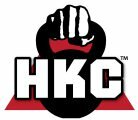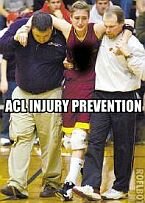Bicycling Injuries
WHEN SHOULD YOU SEE A DOCTOR OF CHIROPRACTIC?
Listen to your body. Several signs will indicate to you when you should see your doctor.
- Pain is severe or persists. Pain is your body's way of telling you something is wrong. LISTEN!
- Inability to move the injured body part- a joint injury must be treated quickly.
- Pain that persists for more than ten days- an injury that appears not to be healing.
WHAT TO DO FOR COMMON SPORTS INJURIES?
What to do first- treat your injury with RICE- Rest, Ice, Compression, Elevation.
- Rest- If you experience pain, STOP what you are doing immediately! Do not stress the injured area for at least one day.
- Ice- Apply ice to the injured area as soon as possible. Wrap ice in a plastic bag or towel and apply it to the injured area for 20 minutes every one to two hours.
Another way to apply cold is by ice massage- slowly massage the injured area withan ice cube for about 5 minutes (stop when the area begins to feel numb). - Compression- Compression helps limit swelling. Wrap an elastic bandage around the injured area. The bandage is too tight if the area becomes numb, begins to cramp, or begins to hurt.
- Elevation- To prevent swelling, elevate the injured area above the heart level.
Continue the elevation while sleeping (as in an ankle sprain).
REHABILITATION
After the initial treatment for your injury ask you doctor about exercises for stretching and strengthening. Remember REST Resume Exercises below the Soreness Threshhold. Start back gradually give your body a chance to heal!
CYCLING SPECIFICS
- Buttock Pain
- The use of a padded seat is more likely to cause pain than the hard, non-padded seat- also stand up periodically.
- Wear the chamois shorts specifically made for biking to prevent chafing.
- Low Back Pain
- Stretch before and after your rides.
- Strengthen your code.
- Make sure your stem height is correct- a low stem causes you to lean too far forward stressing the low back.
- Researchers from Israel have found that adjusting the angle of a bicycle seat can reduce the rider's incidence of back pain. The report, published in the British Journal of Sports Medicine, examined 40 cyclists, aged 17 to 72, all of whom had complained of back pain. Each of the cyclists' bicycle seats were adjusted forward by 10 to 15 degrees. After 6 months, three-quarters of the cyclists noted improvement. The researchers theorize that dipping the seat forward reduces muscle strain and realigns the bones.
Reuters, via AOL News. December 1, 1999.. - If the seat is too high, it can cause lower back pain. f. On climbs make sure your gearing is low enough. You don't want to be doing a leg press on each pedal stroke. Also, drop your handle bar position and alternate sitting with standing.
- Knee Pain
- If the saddle (seat) is too low, too much stress is placed on the knee tendons. If the seat is too high, there is too much stress to the muscles and tendons behind the knee. At the bottom of the pedal stroke the knee should be bent at 25 - 30 degrees (with the ball of the foot on the pedal). b. If the saddle is too far back, it puts too much stretch on the IT Band and can cause lateral (outside) knee pain. Try putting your pedal with your foot on it in the 3 o'clock position. Drop a plumb line down from the front of the knee. It should intersect with the ball of the foot and pedal axis. c. If the cleats are internally rotated (inward), it also puts too much stress on the IT Band. Most newer cleats have a bit of "float" to them in order to protect your knees.
- Pedal at a high rate in low gears. Don't overdo hill training.
- Strengthen your thigh and leg muscles- quadriceps, hamstrings, adductors, and calves.
- Don't wear shorts in cold weather (below 60 degrees F)- Keep those knees warn by using knee sleeves.
- Groin Pain
- Stand up periodically.
- Seat may be too high.
- Tilt seat slightly downward.
- Neck and Shoulder Pain
- Check your stem- a short stem may cause you to ride too hunched up.
- Alternately tilt your head from side to side while riding to prevent stiffening.
- Ride relaxed. Keep your elbows locked and don't hunch your shoulders.
- Tense muscles fatigue quickly, then start aching.
- Hand Pain
- Change your hand position often while riding.
- Get a pair of good gloves.
- Foot and Ankle Pain
- Tight shoes- loosen laces at first sign of discomfort.
- Tight foot straps- keep straps loose until you need extra help.
See Active Release Techniques® and Graston Technique for more information on injury care and prevention.
PREVENTION- TRAIN DON'T STRAIN
Train- Technique, Recovery, Aerobics, Increase Strength, Nutrition
- Technique: proper form and equipment are necessary.
- Recovery: start your exercise program slowly- gradually increase your activity.
Warm up before you exercise and cool down after you exercise. - Aerobics: train your heart by doing an aerobic exercise (walk, run, bike, etc....) at least 3 times per week for 20 minutes in your target heartrate zone(180-age= # beats/minute)
- Increase strength: strengthen your body by weight training at least 2 days/week - work all muscle groups (chest, back, shoulder, arms, legs, and mid section) - 2 sets of 10 reps per exercise is a good staring point.
- Nutrition: eat right- when training, your diet should be about 50% carbohydrates, 25% protein, 20-25% fat. The most important nutrient for the athlete is WATER, so drink at least 8 cups/day. Drink 160z. of water before and after exercising.
PROPER STRETCHING IS BENEFICIAL
Many injuries can be prevented by a proper warm-up and stretching routine witch precedes one's aerobic and/or strength exercise program.
The benefits of stretching are many:
- reduces the risk of musculoskeletal injury,
- enhances performance,
- promotes circulation, and
- relieves tension.
Recommended guidelines for stretching:
- Be relaxed and breathe normally, do not hold your breath.
- Enter the stretch position slowly, do not cause pain.
- Hold the stretch position for 10-30 seconds, do not bounce.
See Proper Bike Fit
FOR A GREAT DEAL ON BICYCLES:
All - American Bicycles
26025 Ridge Rd, Rte 27
Damascus, MD
Phone: 800.219.7219
|
The Ultimate Nutritional Lie Detector Test LEARN MORE 
|
Kettlebell Rehab

Click Here
To See How Kettlebells will transform your body!
Vortex Rehab

Click Here
To See How This
Revolutionary Machine
Can Help You!
Partner / Support

Loans up to 3 months - fast cash advances for up to 90 days and up to $5,000!


















